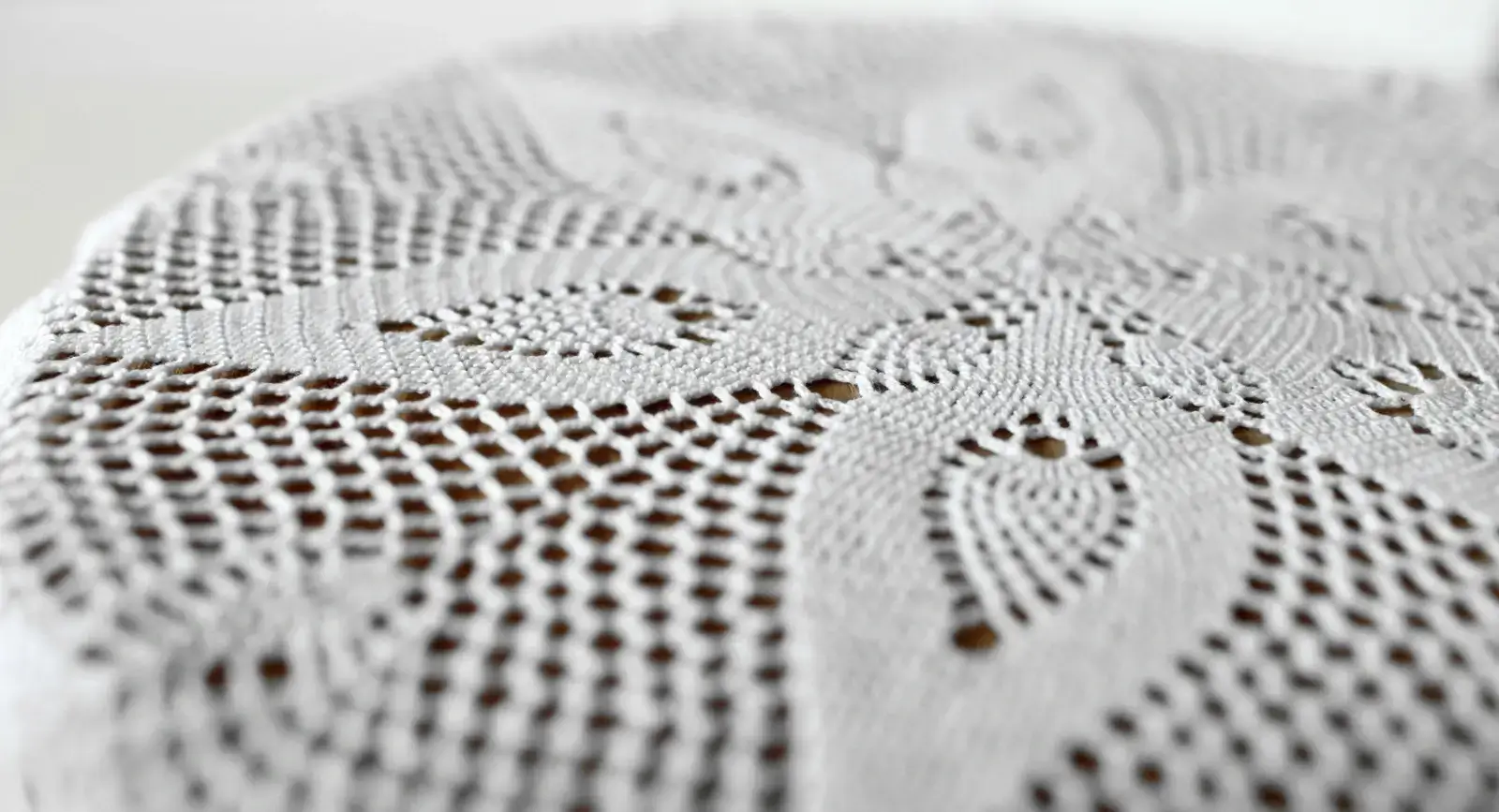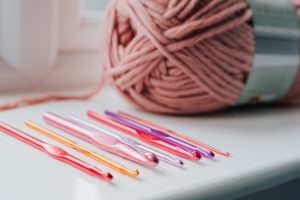How to Crochet With Thread For Beginners
Are you a crochet enthusiast looking to level up your skills? Working with crochet thread can be a challenging but rewarding experience. Whether you’re a beginner or have been crocheting for years, mastering the art of crochet thread requires some essential tips to ensure your projects turn out beautifully.
In this article, I’ll share key tips that will help you become a pro at working with crochet thread. From choosing the right thread weight to understanding the importance of tension and achieving a polished finish, we’ll cover everything you need to know to create intricate and delicate crochet projects.
Get ready to take your crochet skills to the next level and create stunning projects with crochet thread. Let’s dive into the world of crochet and unlock your full creative potential today.
This page includes affiliate links. As an Amazon Associate, I earn from qualifying purchases. If you make a purchase from these links, I may make a small commission at no cost to you. Thank you for your support!
Benefits of working with crochet thread
Using crochet thread will allow you to create projects that are lightweight and cool. Crochet is not just for the colder months! Light shawls, tops, and dresses for the warmer seasons are amazing when made with a fashion-weight crochet thread.
The crisp and smooth quality of mercerized cotton will give your project beautiful stitch definition — this is especially nice when you want to show off the intricate patterns of a doily or table runner, for instance.
Types of crochet thread
Most crochet thread is made of mercerized cotton (cotton that has been treated with a chemical process to give the fibers more shine and smoothness). For this reason, it can also be commonly called “crochet cotton”.
Crochet thread is also sometimes made of nylon, acrylic, or silk.
Crochet thread is much thinner than most types of yarn and comes in sizes from lace weight to ultra-thin (nearly the same thickness as sewing thread). The numbering system for classifying “weight” is also different from yarn: in crochet thread, the higher the number, the thinner the thread!
For more information, check out this post about crochet thread weights.
Essential tips for working with crochet thread
Choosing the right crochet hook for thread
Steel crochet hooks are usually the right tool for the job! Steel hooks differ from regular crochet hooks in size and materials. While regular crochet hooks are made of lightweight materials like aluminum, plastic, or wood, Thread crochet hooks are made of steel.
The steel is stronger and resists bending or snapping under the greater tension needed to crochet with thread.
I recommend steel hooks that also come with an ergonomic handle to reduce fatigue in the hands while crocheting. Choose the right size hook to go with your crochet thread! If you are working from a written pattern, the author will usually suggest a hook size, but here are some general guidelines:
- #3 Crochet Thread (the thickest crochet thread; similar to yarn size #2, Fine); recommended hook size: 3.5 – 3.75 mm
- #5 Crochet Thread (similar to yarn size #1, Super Fine); recommended hook size: 1.75 – 2 mm
- # 10 Crochet Thread (sometimes called bedspread weight; similar to yarn size #0, lace Weight); recommended hook size: 1.5 – 1.75 mm
- #20 Crochet Thread; recommended hook size: 1.15 – 1.25 mm
- # 30 and # 40 Crochet Thread ; recommended hook size: 1 mm
- # 60 and # 80 Crochet Thread ; recommended hook size: 0.75 mm
Maintaining consistent tension
Crocheting with thread calls for more tension than crocheting with yarn. Wrapping the thread around several fingers of the non-dominant hand will usually do the trick for maintaining tension and matching gauge.
If wrapping the thread around the fingers is uncomfortable, think about trying a yarn tension regulator or ring. A thimble or finger cot for working with very fine thread and hooks is a good idea as well.
How to achieve a neat and polished finish
Blocking is the secret formula for getting a crochet project to the proper size and shape! Blocking a crochet thread project will open up the stitches and show off that beautiful and intricate pattern. It will also give the piece a nice drape.
For crochet projects made with cotton thread, the recommended methods are wet blocking or steam blocking.
Wet Blocking
Immerse the crochet piece in water, then roll it in a towel to remove excess. Pin to the desired shape on a towel or blocking boards and allow to air dry.
Alternatively, pin the piece first and then spray it with water before allowing it to air dry.
Steam Blocking
Pin the crochet piece to a towel or blocking board in the desired shape. Using an iron on the steam setting, hover the iron 1 cm above your project for a few seconds per section to allow the steam to penetrate the fibers. Allow the project to air dry. (Important! Only use stainless steel or glass-headed pins when steam blocking! Using pins with plastic heads could result in the plastic melting from the heat of the steam.)
Stiffening Crochet With Starch or Fabric Stiffener
If you want to take finishing your thread crochet project a step further for an item like a Christmas ornament or doily, you can stiffen your crochet with laundry starch or a craft glue-based fabric stiffener.
Pin the piece to a blocking board or towel and spray with the stiffening solution. Alternatively, soak in a stiffening solution, squeeze out the excess, and then block and pin.
Be aware that some starch may turn yellow over time.
Common mistakes to avoid when working with crochet thread
- Not working with good lighting. Crocheting in general is easier and more comfortable when you have good lighting to work by. Daylight is fantastic, but if you are working at night, use an adjustable overhead task lamp or neck light.
- Not using magnification if needed. The tiny threads and stitches of thread crochet may require some of us to use some form of magnification for good visualization. This has the added benefit of allowing us to sit in a relaxed position to crochet and not have to hold the work up close to the face.
- Sitting in an uncomfortable position or with poor posture. Sitting in a chair with good support for the arms and back is invaluable for crocheting with comfort. Use your best posture for relaxed movements and reduced tension or pain while crocheting.
- You are not using the best crochet hooks for the project. Using the correct size hook and the hook that is most comfortable for you will result in the most comfort and the best final results. Experiment with different brands of hooks and regular vs. ergonomic.
- Not blocking the finished project. Blocking the finished crochet will open up the stitches and make the finished shape the best for showing off beautiful stitches and patterns.
What can you crochet with crochet thread?
Baby clothes and baby blankets; amigurumi; scarves, shawls, dresses, and tops; Christmas ornaments: Size 3 crochet thread.
Handbags, wallets, and purses: Size 3 crochet thread or Size 5 crochet thread.
Doilies and table runners; jewelry; key chains; bookmarks; bedspreads; curtains; Christmas ornaments; micro crochet; mini amigurumi: Size 10, 20, or 40 crochet thread.
Resources for learning and improving crochet thread skills
If you’re looking to improve your crochet thread skills, there are a variety of resources available to help you, no matter what your skill level. One great place to start is with online tutorials and videos. There are many talented and experienced crocheters who share their knowledge and techniques online, often for free.
Additionally, you can find many books and magazines dedicated to crochet and threadwork which can provide valuable tips and inspiration. The local library and library apps like Hoopla or Libby are invaluable resources.
Finally, attending a crochet class or workshop can be a great way to learn from an experienced instructor and connect with other crocheters in your community.
Whatever your preferred learning style, there are plenty of resources available to help you take your crochet skills to the next level.
Ready to try some fantastic thread crochet patterns? Here are some other posts to explore:
9 Free Crochet Thread Patterns
Beautiful Crochet Thread Scarf Patterns
Crochet Thread Skinny Scarf – Free Crochet Pattern



